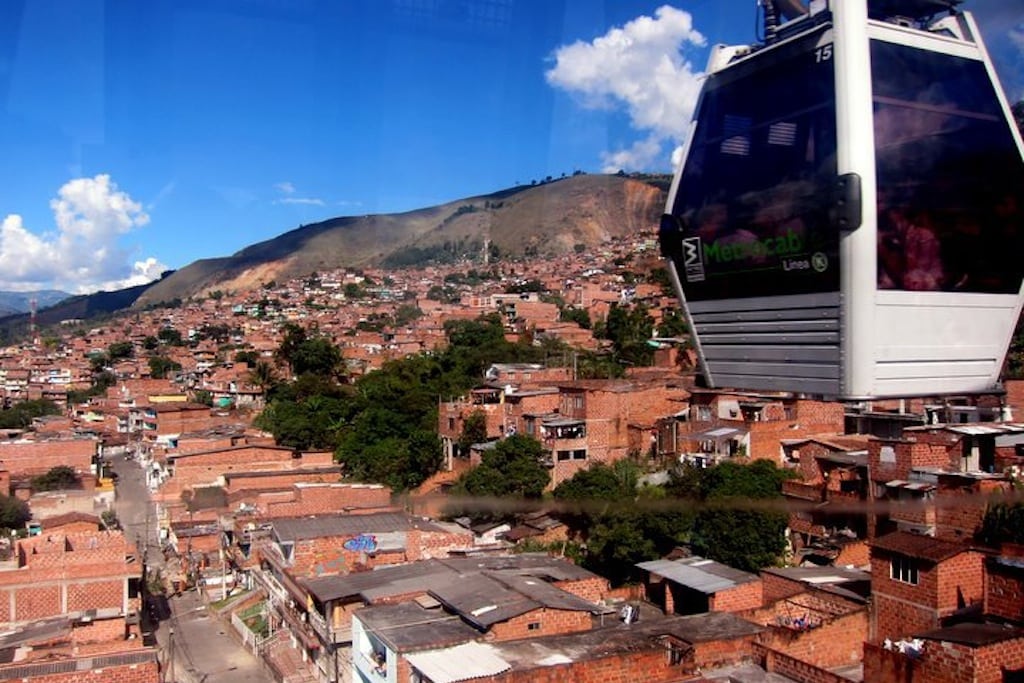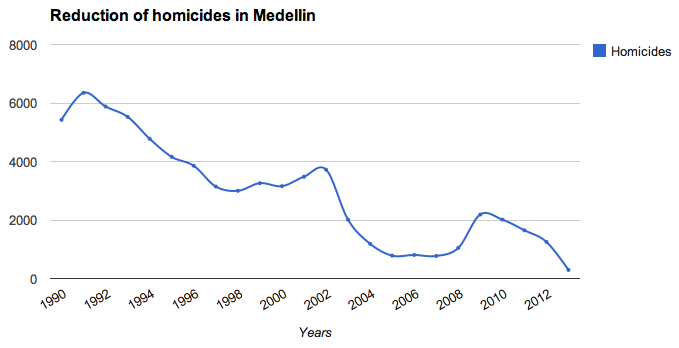Skift Take
Colombia has become a darling of South America during its transformation, but those changes and their impact on tourism can be seen clearly in Medellin. The city’s tourism sector fuels its economic growth while homegrown efforts are turning the city into something many travel to see.
Technology is fueling a social transformation in Medellín, Colombia.
A city once better known for Pablo Escobar and cocaine wars is now being heralded as the “Silicon Valley of South America.”
In an effort to make Medellín an innovative business hub and leader of contemporary urban design, the city has also become one of the more buzzed about international tourist destinations.
Happy locals equal happy visitors
Urban renovations have changed the landscape of Medellín over the past decade.
The city’s efforts received recognition when then Wall Street Journal named it “Innovative City of the Year” in 2012. After a series of online polls, Medellín beat out Tel Aviv and New York with the most enthusiastic social media endorsement of the city’s progress and innovation.
In a statement following the contest, Urban Land Institute described Medellín’s transformation as follows:
Few cities have transformed the way that Medellín, Colombia’s second largest city, has in the past 20 years. The city built public libraries, parks, and schools in poor hillside neighborhoods and constructed a series of transportation links from there to its commercial and industrial centers. The links include a metro cable car system and escalators up steep hills, reducing commutation times, spurring private investment, and promoting social equity as well as environmental sustainability.
Efficient public transportation is at the forefront of the city’s efforts leading to the construction of a Metro rail network and cable car system that have changed the way locals and tourists access their city.
The city’s Metro network, completed in 1996, had a significant social and cultural impact that connected neighborhoods, markets, and businesses.
Similarly, the Metrocable finished in 2004 cut many locals’ commutes in half, making jobs and opportunities easier to reach. One of the three gondola lines was constructed primarily for tourists and transports visitors to the nature preserve Parqui Arvi.
More recently, the city has worked towards creating bus systems and a bike-share program.
Private and public partnerships are key to developing infrastructure in Medellín and its progressive use of public space that now includes the Botanical Garden, libraries, the Medellín Interactive Museum.
The city is currently planning a park that would be built entirely above the city, says Juan Camilo Quintero Medina, CEO of Medellín 2018, the city’s bid to host the 2018 Summer Youth Olympics.
The city also accredits technology with making the city safer. The number of homicides and thefts have significantly decreased in Medellín since the 1990s, due in part to the installation of security cameras around the city.
Homicides reached a peak of 381 per 100,000 residents in 1991, but has since decreased to just 60 homicides per 100,000 residents.
Colombia’s rising tourism sector
Medellín’s growing tourism industry resulted from improving the lifestyle of the city’s residents, which in turn made city visits a better experience for tourists as well.
The number of international and domestic visitors have consistently increased over the past 5 years, growing at an average annual rate of 16 percent.
| Year | Foreign visitors that report Medellin as main destination (international flights) | Passengers that arrive on a domestic flight | Total | Annual Percent of Change |
|---|---|---|---|---|
| 2008 | 110,378 | 1,306,124 | 1,416,502 | X |
| 2009 | 145,276 | 1,373,038 | 1,518,314 | 7.19% |
| 2010 | 166,913 | 1,731,119 | 1,898,032 | 25.01% |
| 2011 | 165,789 | 1,825,062 | 1,990,851 | 4.89% |
| 2012 | 173,260 | 2,363,999 | 2,537,259 | 27.45% |
The Colombian Vice Minister of Tourism Tatyana Orozco explained the country’s strategy for increasing tourism to Skift earlier this month.
“[We are] investing with the private sector and different cities in infrastructure such as hotels, convention centers, we are building national parks, we are building marinas,” said Orozco, “We are doing everything to strengthen our infrastructure… so that more tourists can come in.”
In a recent tweet, Orozco announced a scholarship funded by the Ministry of Commerce, Industry, and Tourism for students and professionals that want to study tourism.
Abierta convocatoria 2013 para becas turísticas… Ya no hay razón para no estudiar turismo!! http://t.co/uffg9bbQ73
— tatyana orozco (@tatyanaorozco) May 21, 2013
Orzoco says Colombia looks to Mexico as role model in terms of tourism; it also had to overcome violence, corruption, and infrastructure challenges to create an attractive destination.
Colombia competes with countries like Costa Rica and Peru that enjoy better country branding in the U.S. The competition is one reason why Colombia chooses to highlight very specific experiences with destination branding, explains Orozco.
Creating better country branding
Despite the city’s impressive progress, many foreigners still think of drugs and crime when they hear Medellín. Colombia is investing significant time and money to tell foreigners what the country and state are really like today.
The country’s early attempts at rebranding were met with scoffs and questions marks, but recent state and independent campaigns have had more success.
An independent marketing campaign that started as project leading up to Social Media Week New York went viral after highlighting the country’s name is spelt with two “o”s. Last month the government’s Colombia Country Brand launched its largest marketing campaign ever with a 10-day event in Times Square.
Medellín is also using technology to improve its reputation via social media.
Medellín Convention and Visitors Bureau spent the past year increasing its social presence and redesigning its website, which was launched just last week. The city plans to investment more in digital outreach in the coming year.
“For this year I planned to increase the capacity of the whole strategy, conceiving it not only as a website but rather a wider digital promotion strategy: email marketing, social media, advertisement, mobile apps, editorial content, digital CRM, stakeholder-based contents and local industries involvement,” MCVB project leader Daniel Urrea Pena tells Skift.
A thriving city attracts business travelers
Medellín does not just want to be seen as a destination for a short vacation, but a city where companies want to be based and international corporations come to do business.
Medellín’s Ruta N initiative encourages innovative tech companies to base themselves in Medellín in order to “increase the city and region’s competiveness.”
The city also launched tax incentives to draw businesses to the city. Businesses involved in certain clusters including energy, construction, tourism, and information technology would be exempt from property and industry and trade tax.
According to the International Congress and Convention Association, Medellín hosted 28 international conventions in 2012, earning it the 87th spot on the list. This is far fewer than its Brazilian counterparts Rio and Sao Paulo that hosted approximately 80 meetings each, but does represent an area of growth for the Colombian city.
Ten direct international routes are now flown from Medellín.
| Destination | Duration | Frequency of Flights |
|---|---|---|
| Miami | 3h:25min | 2 daily flights |
| Panama | 1h:20min | 8 flights per week |
| Caracas | 1h:59min | 4 flights per week |
| Quito | 1h:35min | 2 daily flights |
| Fort Lauderdale | 3h:25min | 1 daily flight |
| El Salvador | 2h:50min | 4 flights per week |
| Madrid | 9h:50min | 2 flights per week |
| Curazao | 1h:30min | 2 daily flights |
| New York | 5h:15min | 3 flights per week |
| Aruba | 1h:20min | 2 flights per week |
| Lima | 4h:30min | *Through Quito. |
The Daily Newsletter
Our daily coverage of the global travel industry. Written by editors and analysts from across Skift’s brands.
Have a confidential tip for Skift? Get in touch
Photo credit: Floating above the favelas of Medellin, on the metro cable car. Rafat Ali / Skift

